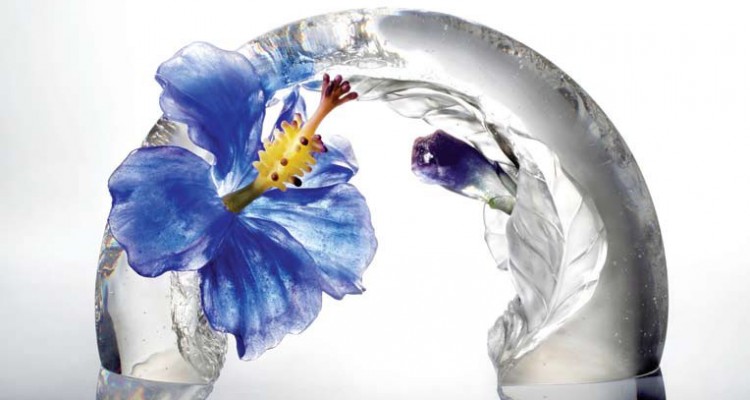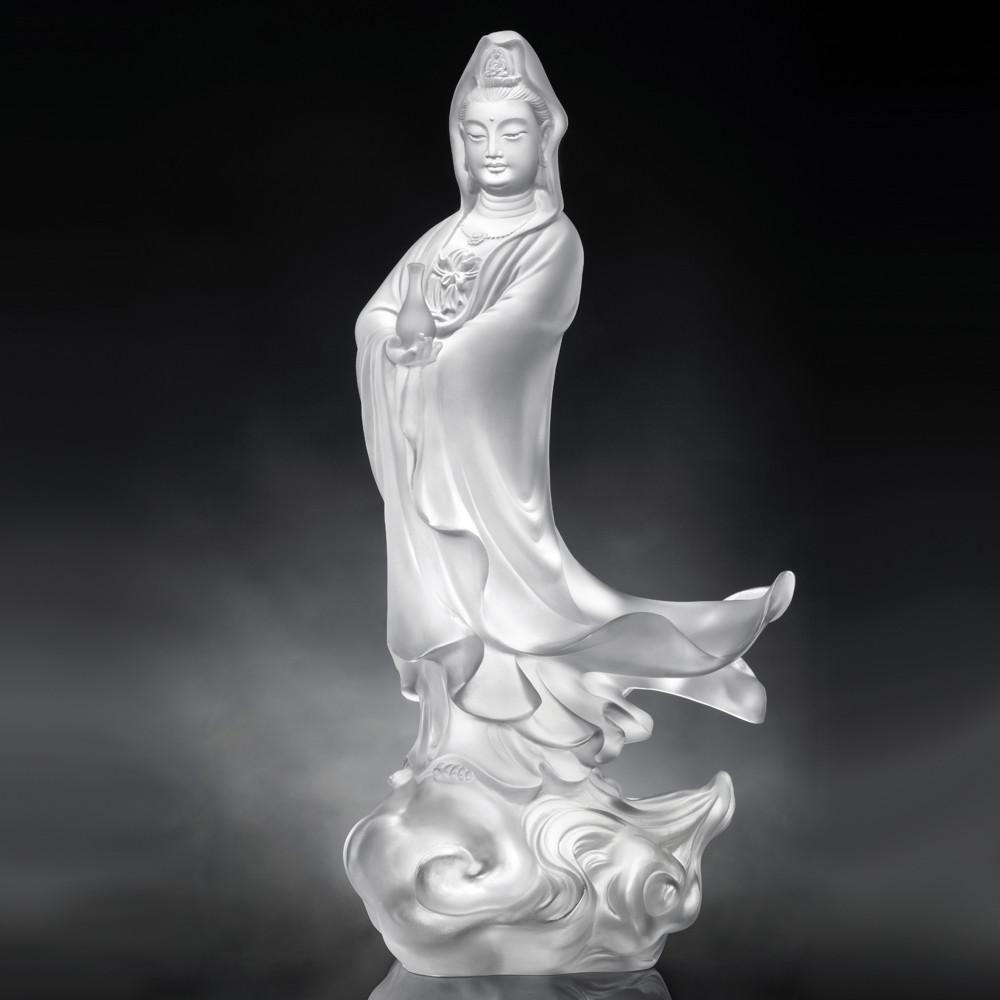
When traveling in Asia and passing through Taiwan’s airport, I came across a beautiful glass art display. Glass is an excellent medium for creating art as it can be transparent, lucid, and rich in a full spectrum of colors. Most people are quite familiar with the well-known glass art brands such as Lalique, Swarovski, and Moser in Prague, Czech Republic. Taiwan’s Liuli art glass is distinguished by the ancient Chinese influence upon the designs. Lotus leaves, koi fish, Buddhist themes and a subtlety of color and form make it is easy to distinguish between European designed art glass and those of Chinese design. The two famous makers of art glass in Taiwan are LiuLiGongFang and Tittot. Both brands are involved in the creation and design of LiuLi.
“LiuLi” in Chinese refers to a crafting technique used in ancient Chinese crystal glass. Originated in Egypt, its history spans thousands of years with its first appearance in the 11th century BC. The art of LiuLi glass in China can be traced to the Han Dynasty in the period ranging 206 BC to 220 BC. Unfortunately, traditional artisan work dwindled when China opened its doors to imported goods in the 19th century, which is when the First and Second Opium wars took place. Subsequently 19th century French artisans revived the lost-wax casting technique which was subsequently known as pate-de-verre .

LiuLiGongFang (琉璃工房) means LiuLi Studio in Chinese. It was founded in 1987 by actress Loretta Yang and director Chang Yi to fulfill their passionate vision of reviving Chinese glass art. The founders mortgaged their home and gathered funds from friends and family members to found the company After three years of trial and error and investment of $1 million, Loretta and Chang successfully mastered the French pate-de-verre or lost-wax casting technique. Pate-de-verre technique is a complex 12-step process that lasts six to eight weeks. It begins with casting a wax sculpture in plaster, melting out that wax and adding glass ingredients to the leftover negative space, enabling incredible, lustrous, detail (1). Initially, the two founders worked side by side at their studio in Tamsui, Taipei County (now New Taipei City). Today, LiuLiGongfang employs more than 900 employees in 67 locations around the world. LiuLiGongfang’s artworks have been exhibited internationally, in Taiwan, Japan, Mainland China, Europe, and United States. Several pieces can be found among the permanent collection of renowned museums, such as The Palace Museum, Beijing, Shanghai Fine Arts Museum, Tsui Museum of Art, Hong Kong, Medicine Buddha Temple in Nara, Japan, The National Museum of Women in the Arts in Washington D.C., United States, Victoria and Albert Museum in United Kingdom, Bowers Museum in California, United States. The work can also be found in the private collections of 32 world leaders and given as gifts at the Academy and Emmy Awards (2).

Following the success of LiuLiGongFang, Heinrich Wang, who was part of the founding team, left in 1994, and began his own LiuLi brand: Tittot (琉园). Heinrich Wang and his brother Wang Yung-shan managed and grew Tittot with a dream of creating a Chinese crystal glass world. “Tittot” means LiuLi Garden in Chinese. Tittot’s artworks are also exhibited worldwide, including Beijing, Japan, France, Mexico, Germany, and are part of the collections at the Victoria and Albert Museum in UK, museums in Japan, National Museum of China, National Museum of History in Taiwan, Museo del Vidrio (Muvi Museum of Glass) in Mexico. Tittot was the first company in the cultural and art industry to go public in Taiwan. In 1999, the first “Tittot Glass Art Museum” was established in Taiwan. Tittot is now expanding its horizon to include large works for installation in venues of public space. Like Lasvit, the Czech glass producer with its installations in significant hotels and Chihuly’s “Fiori di Como” at the Bellagio, Tittot anticpates assuming a prominent role in the public art arena.
In the words of a Chinese poet; “世间好物不坚牢,彩云易散琉璃脆, the treasured things in life are often here but for a little while.” From the artist’s hands are born objects of great beauty, delicate in nature, but enduring over many generations. How enriched our lives are by these exquisite treasures.

(1) Singapore Finest
(2) Wikipedia
(3) Las Vegas Review – Journal




Be the first to comment